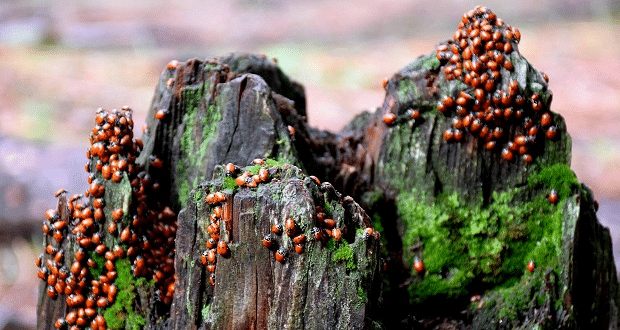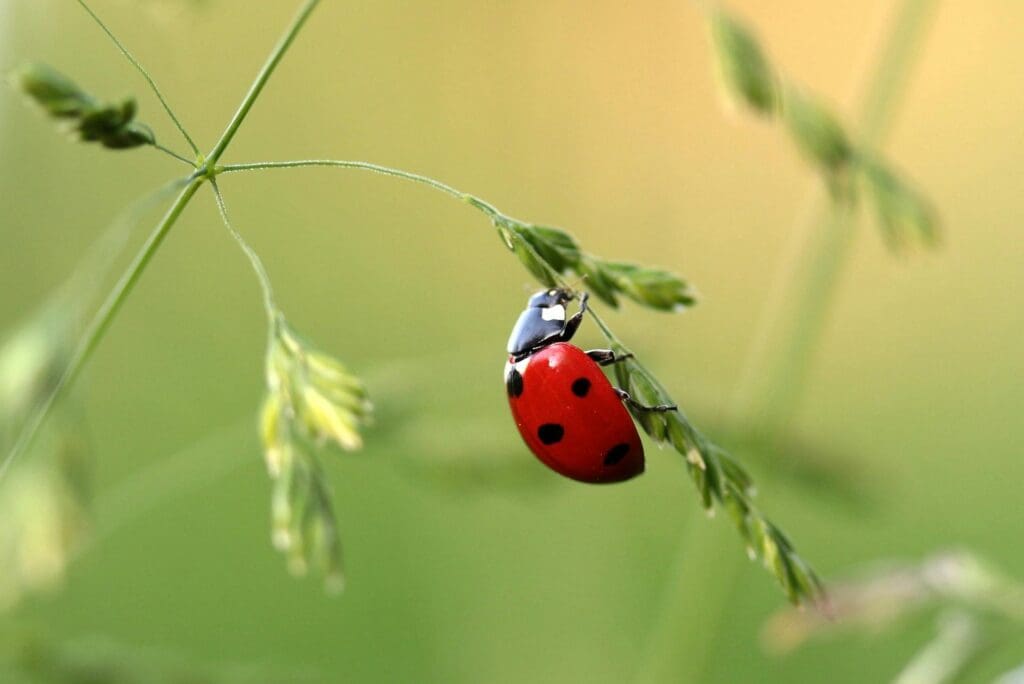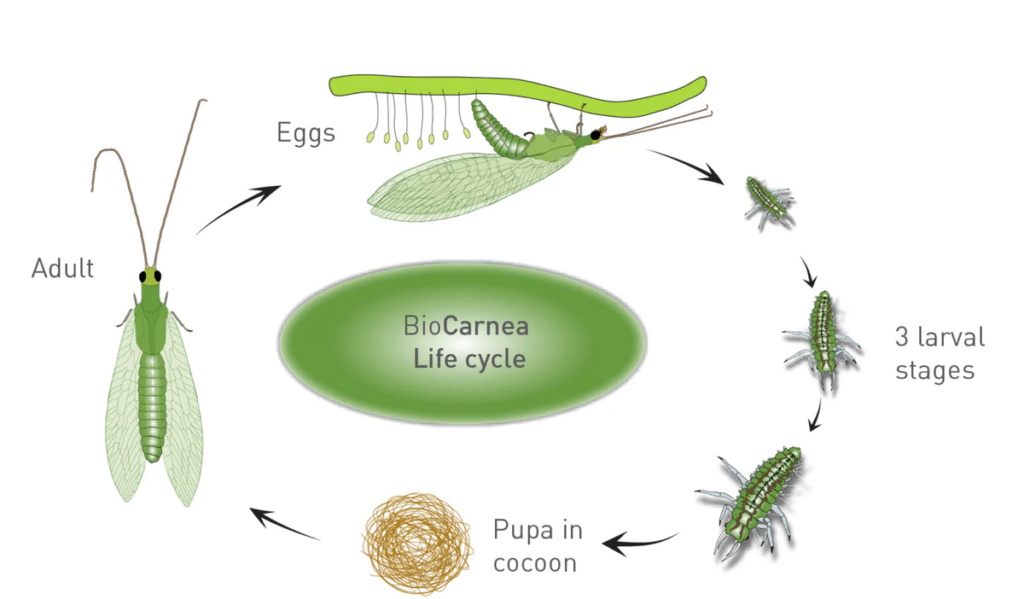Many gardeners and houseplant owners are familiar with using ladybugs for pest control – they love aphids, right? You can purchase ladybugs anywhere online, and release them in your garden, home, or greenhouse. We even posted on Instagram about our garden center using ladybugs for pest management last year. But did you know that most ladybugs you purchase are wild-caught? Did you know they’re harvested in the Sierra Nevada mountains, and are not native to Tennessee? After attending a lecture featuring Bug Lady Suzanne, of Buglady Consulting, our staff learned that ladybugs are not always ideal pest controllers – it’s the Lacewing that we’re looking to for sustainable pest management. Suzanne provided us with tons of fantastic information, and changed our minds on the use of ladybugs in a garden center. Want to learn more? Keep reading!
Why not Ladybugs?
To start, Ladybugs, or Convergent Ladybird Beetles, are not 100% carnivorous. For some species of ladybug, more than half their diet is pollen – they’re pollinators before predators. This being said, they are not as effective predators for soft-bodied pests like aphids or mealybugs. Also, ladybugs are often wild-caught in the Sierra Nevada mountain range – this means that they are mostly native to California. Around 14% of all wild ladybugs carry Microsporidia – a contagious fungus. These wild-caught ladybugs, when brought to other parts of the country, spread Microsporidia. These ladybugs aren’t native elsewhere and are meant to be there and nowhere else.

Another downside to wild-harvested ladybugs is that they are often harvested while they are hibernating. This is a negative, because if the ladybugs are fat and happy and you release them in your garden, they aren’t going to want to feed on pests and other insects. Most likely, due to their migratory nature, the ladybugs will travel to another location and disperse. On the contrary, if you have acres and acres of farmland or plants, ladybugs could be a good choice. You could release ladybugs, and they would travel far to find other food sources. If you have a targeted area you are trying to treat, such as a greenhouse, the adult ladybugs would be released and then they’d likely leave the area.

Another issue with ladybugs is that they are rather difficult to farm-raise. Ladybugs often carry parasites, and removing the parasitoids can prove difficult even after generations of careful breeding. Also, ladybugs have a very specific diet. Trying to create a diet that a ladybug is happy to eat is very hard. They require lots of specific protein and pollen, and even then they could turn their tiny noses up at the food provided. They are labor-intensive to grow and due to this, no large productions of ladybug rearers exist. Farmed ladybugs are much more expensive than wild-caught, which just perpetuates the need to harvest them from the wild.
Why choose Lacewings?
Lacewing larvae are the perfect pest management insect. Their larvae are glued onto “egg cards” with dead moth eggs. These moth eggs provide the larvae with a meal when they first emerge so they can get a boost as soon as they’re born. The larvae are voracious predators and can eat hundreds of soft-bodied insects shortly after hatching. They’re a fantastic generalist predator. Another benefit is that the larvae cannot fly in their adolescent stage, so they don’t leave once they hatch. It’s an enormous benefit to have in a garden center, as we don’t want them to leave! Lacewings can target specific sites, and they are very focused predators.

Another benefit is the sustainability aspect – lacewings are not wild-caught. Lacewings are farmed in controlled environments, so they don’t have parasites or diseases. They’re easy to purchase online, and you can know that they were not wild-harvested and sustainably raised. Plus, once the larvae enter into adulthood, they are no longer predators – they become pollinators. They fly from flower to flower, pollinating as they go. They drink honeydew produced by aphids and then lay eggs near the aphids so their offspring will have food to eat once they’re born.

At Gardens of Babylon, if you stop in to our garden center you can see some lacewing larvae egg cards placed strategically throughout the greenhouses! Stop by and see for yourself. We love learning new things, and pride ourselves in staying educated and up-to-date on sustainable pest management and the reduction of pesticide use.





